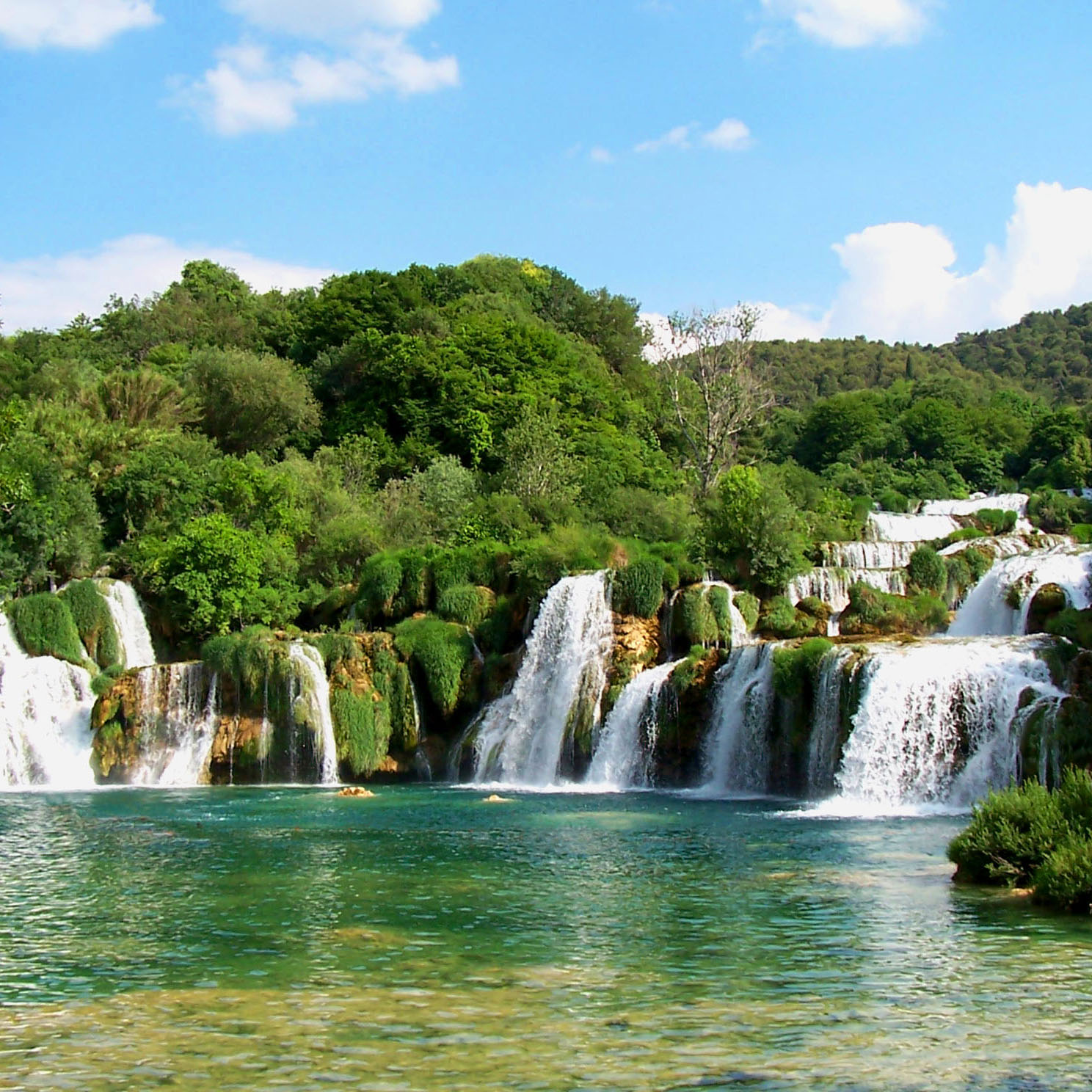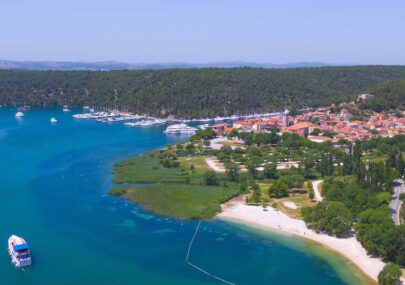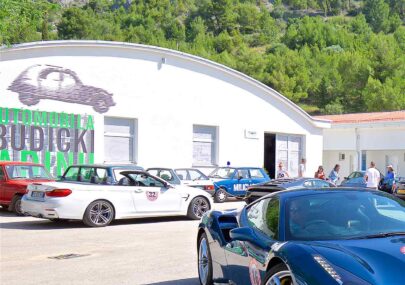
Krka National Park
rka National Park (Croatian: Nacionalni park Krka) is one of the Croatian national parks, named after the river Krka (ancient Greek: Kyrikos) that it encloses. It is located along the middle-lower course of the Krka River in central Dalmatia, in Šibenik-Knin county, downstream Miljevci area, and just a few kilometers northeast of the city of Šibenik. It was formed to protect the Krka River and is intended primarily for scientific, cultural, educational, recreational, and tourism activities. It is the seventh national park in Croatia and was proclaimed a national park in 1985.
he Krka National Park is located entirely within the territory of Šibenik-Knin County and encompasses an area of 109 square kilometers along the Krka River: two kilometers downriver from Knin to Skradin and the lower part of the river Čikola. The Krka National Park is a spacious, largely unchanged region of exceptional and multifaceted natural value, and includes one or more preserved or insignificantly altered ecosystems. The Krka Waterfalls area has the second highest density of lavender in Europe, hence the high frequency of wasps and bees in the area.
he Krka National Park belongs to the Southern European (Mediterranean and sub-Mediterranean) region. Due to its special position and the mosaic distribution of various types of habitats, it is characterized by exceptionally rich and varied flora and fauna. Eight hundred and sixty species and subspecies of plants have been identified within the territory of the Krka National Park, including several endemic Illyrian-Adriatic species. Standing out are the stone bellflower, the chimney bellflower, the mullein inula, Dalmatian pellitory and the Illirian iris, which is found growing on the rocks. Other endemic plants growing in this hot and dry environment include the wolfen spurge, Adriatic violet, musk thistle, thorny centaurium, strawberry spurge and Bertolon's sage. In the wet areas along the Krka and Cikola rivers and in the Krka river valley grow meadow squill, knotweed, European hornbeam, wood melick and lady orchid.
ighteen species of fish inhabit the Krka River, among which ten are endemic, making the Krka a natural landmark of the highest category. Brown trout and Dalmatian barbelgudgeon are a couple of fish that can be found in the ecosystem. Patches of reeds, lakes formed along part of the river and swamped meadows abound in amphibians and birds, while thickets and stone quarries are home to reptiles. The abundance of species of birds (222), the structure of the bird communities and the great significance of the Krka for spring and autumn migrations make it among the ornithologically most valuable regions of Europe. There are numerous birds of prey in the area, notable ones are: osprey, short-toed eagle, golden eagle, Bonelli's eagle, lanner falcon and the peregrine falcon. Other birds of interest are Eurasian eagle-owl, European bee-eater and griffon vulture. Among mammals, there are 18 species of bats, which are generally endangered or near extinction in the rest of Europe, long-fingered bat, the Daubenton's bat, and the threatened European otter.


